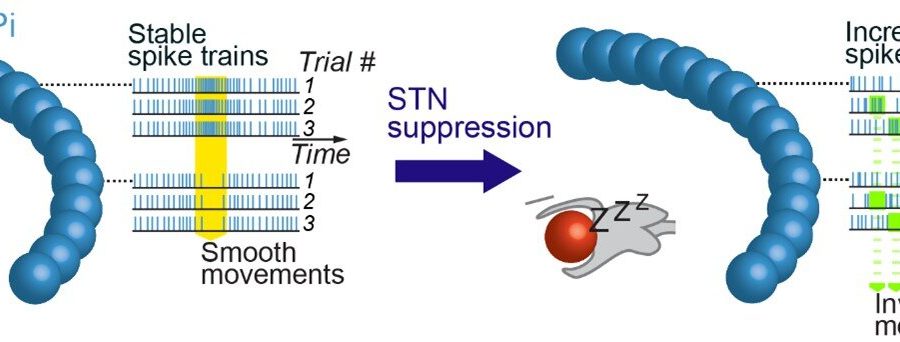Smooth movements are achieved by stable basal ganglia activity

Smooth movements require coordinated control of muscles. Even a simple reaching movement involves coordinated movements of a person’s shoulder, arm, wrist and fingers, which are controlled by temporally precise commands from the motor cortices in the cerebrum. In a recently published paper in Nature Communications, Atsushi Nambu and his research group at the National Institute for Physiological Sciences showed the subthalamic nucleus (STN), a small nucleus in the basal ganglia, plays a crucial role in the generation of such motor commands necessary for smooth movements.
The STN has long been known to be involved in motor control. STN lesion induces involuntary movements, called ballismus, and lesion and deep brain stimulation to the STN ameliorate motor symptoms in Parkinsonian patients. However, its exact role for motor control has been under debate.
The research group applied a molecular tool, Designer Receptors Exclusively Activated by Designer Drugs (DREADD), to the STN of macaque monkeys to reversibly suppress its neural activity. Consistent with STN lesions, monkeys’ reaching movements became unstable and involuntary movements were induced on their contralateral hands.
Next, they recorded activity of single neurons in the internal segment of globus pallidus (GPi) during a reaching task before and after the STN suppression. The GPi is the output nucleus of the basal ganglia and the STN sends excitatory axons to the GPi. The researchers found that the overall firing rate of the GPi was not affected, but GPi neurons exhibited increased spike train variability after the STN suppression.
Their detailed across-trial analyses revealed that high spike train variability was positively correlated to monkeys’ unstable movements, and also some GPi neurons showed phasic firing rate increase/decrease just before the occurrence of involuntary movements. These results indicate that the STN suppression increased spike train variability in the output of the basal ganglia, which induced abnormal movements.
Source: Read Full Article
